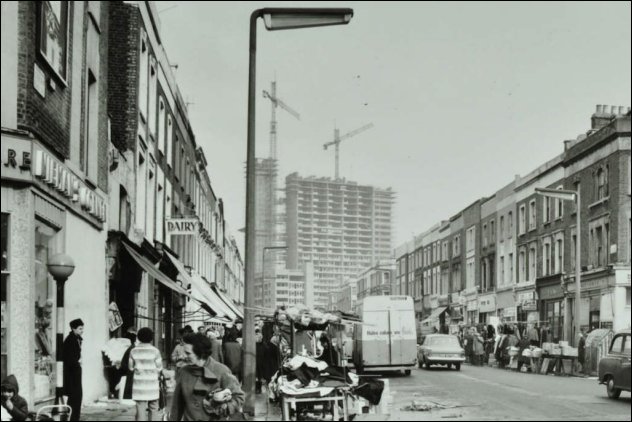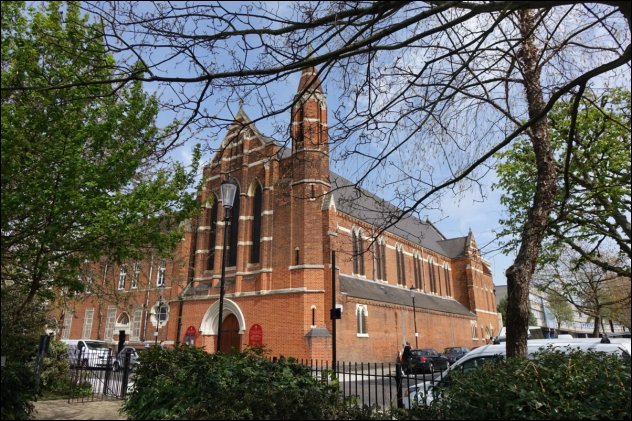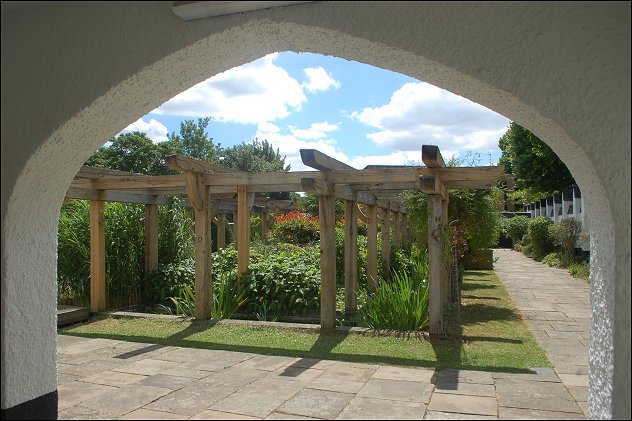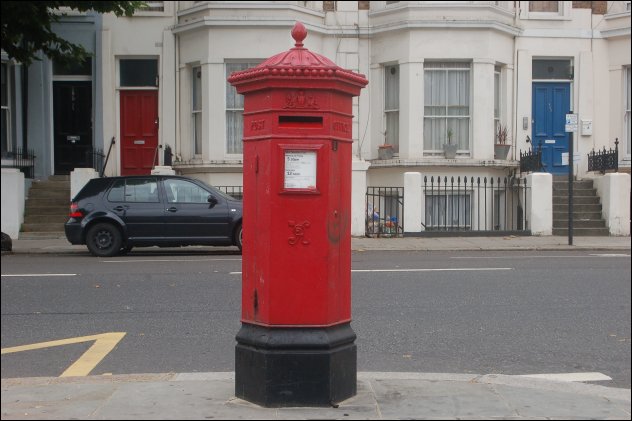
Voysey Garden, Emslie Horniman's Pleasance
Golborne's listed buildings and structures
What do a 19th-century cast-iron horse trough on Harrow Road and Trellick Tower have in common? They're both in Golborne ward, and they're all listed structures is the answer. You might be surprised to learn that there are 167 listed buildings in Golborne. However, the vast majority of those are tombs or structures in Kensal Green Cemetery.Here, we'll concentrate on nine listed buildings (and pillar boxes) that are actually sited on Golborne's streets. Listing comes in three categories: Grade I, Grade II* and Grade II, with Grade I the highest. All of the structures here are Grade II with the exception of the Grade II* Trellick Tower.

Trellick Tower, 5 Golborne Road
Golborne's outstanding landmark, the 31 storeys of Trellick Tower (pictured under construction in 1970), soars 98 metres (322 ft) above Golborne Road. Designed by Ernö Goldfinger (1902-87), Golborne's only Grade II* building was completed in 1972. The structure is described by English Heritage as "Bush-hammered in-situ reinforced concrete with some pre-cast pebble-finished panels, and timber cladding to balconies". This listing was not without its critics, and the building probably falls into the 'love it or hate it' category.
Cheltenham Estate, Edenham Way
Built between 1969 and 1973, and also designed by Goldfinger, this estate comprises the terraced rows of modern housing and two blocks of flats on Edenham Way, just off Elkstone Road and adjacent to Trellick Tower. The listing description runs, "...the best crafted example of a mixed development scheme of any date, exhibiting the rigorous attention to detail that is a hallmark of Goldfinger's best work".
Image: London Churches in Photographs
Church of Our Lady of Holy Souls, Bosworth Road
Cardinal Manning laid the foundation stone for this Catholic church in 1881, and then blessed it when it opened in 1882. The building is described as Early English style and is built with red brick, stone bands and a slate roof. The architect was John Francis Bentley (1839-1902), who also designed Westminster Cathedral in Victoria. The construction bill came to £5,059.
Voysey Garden, Emslie Horniman's Pleasance
Voysey Garden, sometimes known as the Spanish Garden, is set in Emslie Horniman Pleasance, an acre of park bounded by East Row and Kensal Road. The structure was designed by Charles Voysey (1857-1941) in 1914. The walled garden is described as having, "Roughcast walls and shelters, buttressed with circular openings to street and gabled finials". At its centre is a large oak pergola surrounded by a moat.
Portobello Dock, Kensal Road
Set by the Paddington Branch of the Grand Union Canal by Ladbroke Grove this is the former the former Paddington Vestry Refuse Transfer Depot. Built in 1894, this once was where Kensington's rubbish was taken to be carried westwards by horse-drawn barges to a dump at West Drayton, near today's Heathrow Airport.
Cobden Working Men's Club and Institute, 170-172 Kensal Road
Built in 1880, Cobden Working Men's Club has seen a variety of uses over the years and is currently in private ownership. The architects were Pennington and Brigden, of whom little seems to be known except that they worked in London and Manchester. The club is named after the 19th-century radical politician Richard Cobden. This classically Victorian building has Italianate influences and may be the earliest surviving purpose-built working men's club in the UK.
Two pillar boxes, Ladbroke Grove
There are two listed pillar boxes in Golborne ward, both on Ladbroke Grove and dating from the 19th century. One sits on the corner of Ladbroke Grove and Telford Road (pictured), the other on the corner with Oxford Gardens. The two are of the hexagonal Penfold pattern with the tops decorated by acanthus leaves, buds and decorative balls. John Wornham Penfold (1828-1909) was a highly respected architect of his day. Image: The Victorian Web
Image: The Victorian Web






